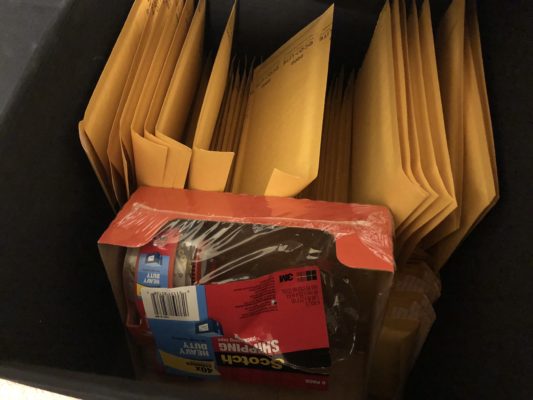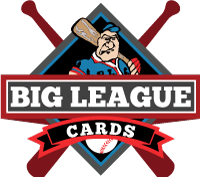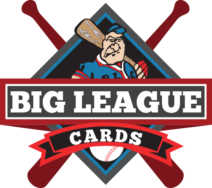Inside the Pack: Dos and Don’ts of Cutting Costs Online
Selling and trading baseball cards online has been, perhaps, the biggest innovation in this industry since the standard 2.5″ x 3.5″ size for cards was adopted. But unlike dealing locally, online transactions come with many extra costs. Fortunately, in my 20 years of dealing online, I have learned many ways to cut down on costs while still providing a safe trip for the card to its final destination. Here are a few things to do — and a few to avoid doing — in order to cut costs when dealing online while still providing a superior experience.
DO: Print the shipping label online
Time is money, but money is also money. The time you save by not waiting in line at the post office is valuable, but there’s an actual monetary savings to printing your shipping labels online. To mail a single card in a bubble envelope costs $3.50 at the post office; online, it costs $2.66. You can print the label from the USPS website, but I find the easiest way is to print from the Paypal website, since the money is deducted straight from Paypal. If you’ve received a Paypal payment, the payment details page will give you the option to print a label, but even if you weren’t paid through Paypal, you can still print a label by visiting www.paypal.com/shipnow.
DON’T: Ship in a plain white envelope (PWE)
This is an affliction that plagues our hobby right now, because postage rates keep rising. Unless you and the other party have both agreed to shipping in a plain white envelope and the other party accepts that the card may get damaged, avoid PWEs at all cost. Unless you pay extra for a non-machinable surcharge, your envelope will be run through a machine, which literally uses a roller to push the envelope along conveyor belts. In other words, your card will be smashed. Sometimes this does no damage; other times, it looks like the card has been trampled by a stampede. With low-cost cards where the buyer or trader agrees to a plain white envelope, you can get away with this; anything more than a $1 or $2 card and I would not recommend it.
DO: Reuse toploaders
Toploaders aren’t extremely pricey, particularly if you buy them in bulk, but cutting out a small cost over a large volume of transactions adds up. At some point in the past few years, the collecting society somehow decided that a piece of tape on a toploader was a cardinal sin. This is the same group of people who, when discussing graded cards, will tell you to “buy the card, not the holder.” Personally, I don’t put tape on toploaders myself, but over the years I’ve acquired so many with tape already affixed to them that I have a nice little collection going. So, on lower-dollar transactions, I’ve been known to pay it forward with one of my used toploaders. On more expensive transactions (I’m talking in the $5-$10 range), I still reuse toploaders, but I make sure they’re clean. I promise you the savings adds up; I’ve been selling on eBay since 1999, and three years ago was the first time I bought my own brand new toploaders, and the only reason I needed them was to sleeve my cards for a card show. Plus, reusing plastics is always good for the environment.
DON’T: Ship without a toploader or other plastic protection
I see this more and more, even on more expensive transactions. I’ve seen cards in penny sleeves taped to cardboard; thicker cards wedged between two taped together thin toploaders or pieces of cardboard; loose cards wrapped tightly in paper towels or tissues; even loose cards thrown in a box with some kind of padding, like the aforementioned folded-up paper towels. The cost savings here is absolutely not worth it, as there is a huge change the cards get damaged and you have to refund your buyer or reverse your trade. Please buy an appropriately-sized toploader or bulk card container that will restrict movement in shipping without damaging corners. It’s well worth it.

DO: Buy supplies in bulk
I fully accept that not everyone can buy in bulk, since storing 1,000 bubble mailers requires a lot of things to fall into place: a lump sum payment, a place to store the bubble mailers, and a very understanding and supportive partner. That said, I’m constantly amazed at how many people buy a single bubble mailer from the post office, which costs the same as a pack of 3 bubble mailers at a grocery or drug store. Bulk doesn’t have to mean the products overrun your house — just not one at a time. Beyond bubble mailers, this also applies to toploaders, as well as shipping labels, packaging tape, and team bags if you use them. Places like Sam’s Club and Costco are great for this, but I find the best deals on supplies on either Amazon or eBay, if you’re looking to truly buy in bulk.
DON’T: Buy the wrong supplies
It’s extremely important to use a toploader and bubble envelope when shipping. However, it’s equally as important to use the correct toploader and bubble envelope. There have been countless times where I’ve received a base card shipped in a thick toploader, or a single card shipped in a giant document-sized bubble mailer. The name of the game when shipping cards is to restrict movement, which lowers the potential for damage. Even if you somehow secure the thin card in the thick toploader from falling out (masking tape, painters tape, or a team bag does the trick), it can still move from side to side, potentially damaging corners. Placing a single toploader in a bubble envelope that is oversized allows the toploader to move around, which in turn allows the card to move around inside it. Size 000 bubble envelopes work best for single cards; you can get away with size 00, but anything larger than that should be a no-go.




